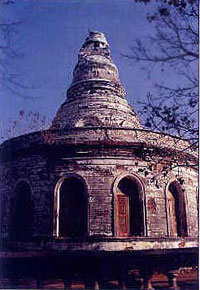Chonburi
Only 80 kilometres from Bangkok. Chon Buri is its
nearest seaside province on the eastern coast. The area is rich in natural
resources, complete with pretty beaches and clean air. It is a popular resort
among local regulars who seek a brief recluse form weekly strain and stress. A
gateway ot the East Coast, Chon Buri is also a centre of the Eastern Seaboard
Development Project, with its industrial parks and fishing villages. Its local
colours, delicacies, and traditions are its addtional charms.
Around 2,500 BC hunter-gatherers left evidence of
the consumption of shellfish, sharks and dolphins near Nong Nor, in the flood
plain of the Bang Pakong river, just north of the present day provincial
capital. At that time Nong Nor would have been located on the edge of a broad,
sheltered marine bay, and the evidence shows that the inhabitants ventured out
to sea on fishing expeditions, as well as hunting and collecting shellfish. The
populace, who probably stayed there for only one season, also fashioned pottery
vessels using much the same methods and implements used in some places in
Thailand today. The location probably had abundant food resources, and there is
no sign of cultivation of plants or domestication of animals.
At Khok Phanom Di, about 14 kilometers north of
Nong Nor, archaeologists have found a site that was occupied for more than four
centuries, beginning around 2,000 BC, or 500 years after Nong Nor was
inhabited. The findings suggest a prosperous and stable community, engaged in
hunting, fishing and trading with inland agricultural communities. In addition
to pottery remarkably similar to that found at Nong Nor, the inhabitants
fashioned ornaments from coral and shells, and excavation of burial sites
revealed grave offerings including one woman's dress which sparkled with more
than 100,000 shell beads.
In 1393 AD, Chonburi, along with neighboring
Chanthaburi, was captured by the forces of Khmer King Kodombong, and much of
the population was forcibly relocated to Cambodia. The great Siamese king,
Ramesuan, retaliated by invading Angkor, making the Khmer kingdom a vassal
state, and taking nearly 90,000 prisoners back to Siam.
In 1766, when the Siamese capital at Ayutthaya
was under siege by the Burmese, a famous Thai general, Phraya Taksin, was able
to get his army to the battle front but according to some sources he was
restricted in his attempt to end the battle because King Ekathad had issued
orders not to use the big canons, fearing that the loud noise would disturb his
wives. Phraya Taksin pondered the situation and concluded that he would have to
retreat and regroup before he could defeat the Burmese. He assembled 500 of his
bravest soldiers and broke through the Burmese lines heading in a southeastern
direction. With Burmese forces in pursuit, he fought his way to Banglamung, in
Chonburi province, where he rested his army in what is today called
Pattaya/Naklua. Legend has it that this interlude is how Pattaya got its name.
Phraya Taksin went on to defeat the Burmese, retake Ayutthaya, invade Angkor,
and establish a new Siamese capital at Thonburi.
 For
600 years after the forces of King Naresuan took their rest and recreation
there, Pattaya remained a small fishing village. In the early 1960's it was
'invaded' by American soldiers and sailors seeking R&R while on leave from
serving in Korat and Vietnam. Since the 1960's it has blossomed into a
cosmopolitan city dedicated to the pursuit of excitement, pleasure and
adventure. For
600 years after the forces of King Naresuan took their rest and recreation
there, Pattaya remained a small fishing village. In the early 1960's it was
'invaded' by American soldiers and sailors seeking R&R while on leave from
serving in Korat and Vietnam. Since the 1960's it has blossomed into a
cosmopolitan city dedicated to the pursuit of excitement, pleasure and
adventure.
Recent decades have witnessed rapid development
of the coastal sections of Chonburi province. The Thai Government set up the
Eastern Seaboard Development Program in 1981 to establish the country's new
industrial development complexes. Laem Chabang Industrial Estate and Export
Processing Zone was established in Chonburi Province. With the support of a
deep-sea port, Laem Chabang Industrial Estate serves agriculture-based and
other light industries such as electronics, auto parts, toys and sports goods
shipped in container ships. Private investors have subsequently set up several
other industrial estates in the province.
|
|
|
|